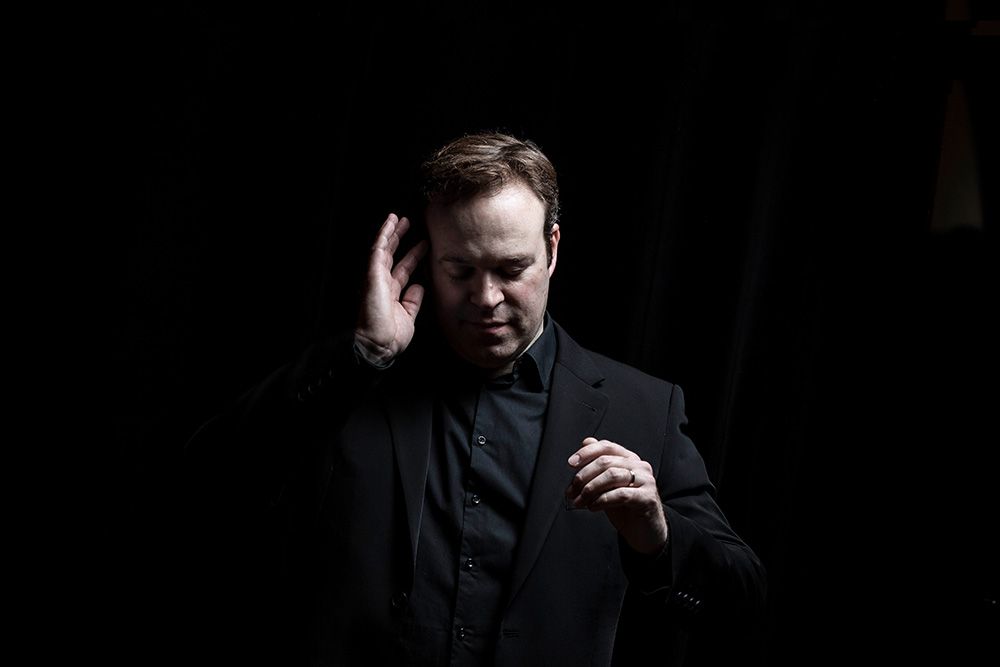The German Requiem, a grandiose sacred choral work
Ein deutsches Requiem, it will be at the Halle aux Grains in Toulouse, on Saturday October 15 at 8 p.m. Under the direction of the chief David Reilandthey are the musicians of theCapitol National Orchestra and the Chorus of the Capitoline National Opera who works, trained by his Choir Director Gabriel Bourgoin. To interpret this oratorio the two soloists are the soprano Sunhae Im and the baritone Edwin Crossley-Mercer.
David Reiland has been artistic and musical director of the Orchester National de Metz Grand Est since 2018 and of the Korean National Symphony Orchestra since 2021. He is fluent in several languages including French, German, English and Italian. He is also currently Artistic and Musical Director of the Sinfonietta Lausanne, as well as Principal Guest Conductor of the Munich Symphony Orchestra. Another chef who is not idle!! not to mention his status as guest conductor, which allows him to be at La Halle, to conduct the OnCT, and the German Requiem.
“Rather than A German Requiem I should have titled it Human Requiem” Brahms will say, thus specifying the whole universal meaning.
the Requiem by Johannes Brahms, final, has seven movements. Only the V is for choir and soprano voice. III and VI are for choir and baritone voice. It was composed not on Latin lyrics, but on German lyrics, hence its name German Requiem.
Completed in 1868, the year in which he added a final movement, it is the fruit of a long period of maturation that began in 1857, the beginning of a spiritual journey for this being, neither atheist nor agnostic, a journey that will continue throughout of his life, sprinkled with related works. While the Latin Requiem is a prayer for the peace of the dead threatened by the terrors of the Last Judgment, the words chosen by Brahms, in the verses of Martin Luther’s translation of the Bible, are intended for the living: the end of the earthly existence, far from being dreaded, brings peace and deliverance from all sorrows and worries. Over a period of approximately 75 minutes, his work is addressed to all of humanity, to all believers, without distinction of race or religion.

As a result of the choice made by Brahms, in the Sacred Scriptures, of episodes relating to Life, Death and Eternity, he was necessarily led to convey through this semi-religious composition a romantic and springtime breath, evoking the memory of his most beautiful lieder. Side by side with thoughts imprinted with sadness flourish hymns of hope, of triumph. Brahms has made the most of these contrasts.
Brahms has nothing to do with this baroque and superb Death against which man struggles in his sacred terror of judgment. Death does not come, it is already there, lurking in us, it is death that “Suddenly dares to laugh inside us when we believe ourselves in the middle of life” (Rainer Maria Rilke). In this conception, there is no fight, no flight in love – and Brahms was not inclined towards love but towards charity -, “so death becomes almost sweet and fraternal and anguish can only be resolved in a kind of maternal consolation like a soprano’s voice wiping away all the tears and soothing the distraught child that we never cease to be. »

“Like a man who comforts his mother, so I will comfort you”.
This excerpt from the text of the fifth movement could define the entire spirit intended by Brahms in his German Requiem. “One only truly writes between scars and sobs” says Jean-Michel Maulpoix and so had to compose most often Johannes Brahms. Death is also a familiar companion for Brahms and it meanders freely in his work, almost part of the landscape, immutable and close.. “Death is the cool night. Life is the overwhelming day” (Heinrich Heine), and this from the first lieder to the ultimate songs of the Four Serious Songs written in the black urgency of the texts of Ecclesiastes almost twenty years later but with the same solitary conviction.
“I considered the dead who died happier than the living who are still alive”.

Before daring to face the depths of the Requiem and its own abysses, Brahms had prepared himself for a long time. He knows how to handle the choral masses because he held the position of choir director both in Dortmund, from the age of 24, in Hamburg and soon in Vienna. He composed for this type of formation more than forty pieces. Psychologically, he is also ready.
Very early, he will have assumed this status of orphan in the world before the double loss of Schumann and his own mother really anchors him in the flesh of this state. The loss of his mother would have, it seems, strongly motivated him for the last movement, added.
the Requiem is a serious work at the crossroads of the ultimate hours and it is a thirty-year-old who writes it. Who would have believed, apart from those close to him, that this young thirty-year-old pianist had the breath and the spirituality necessary to face not only the immensity of the work but also incidentally the whole history of music? Shy yes, but daring as Clara Schumann said. Brahms’ distrust of life or at least its complications, his refusal to attach himself to anything other than friendship and his veneration for simple things, all of this will be reflected in his outlook on the world. Her relationship with her mother, being good and uncouth, seventeen years older than her husband, will be one of devotion and adoration.
Capitol National Orchestra
Saturday, October 15, 2022
Website • Online ticketing

